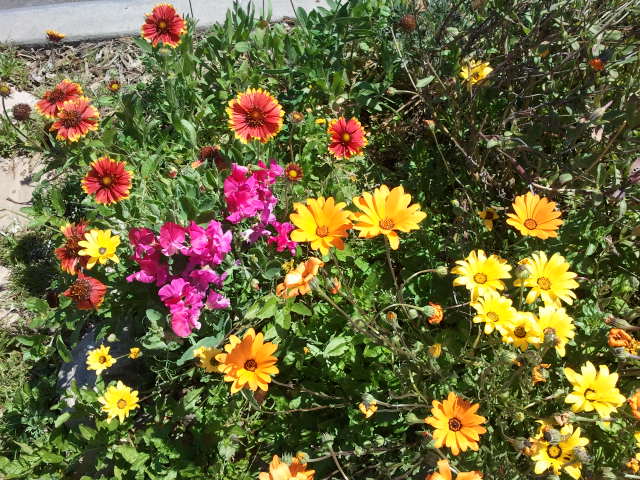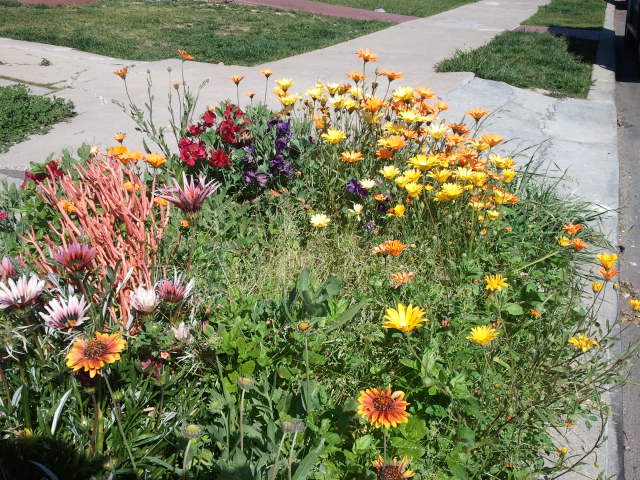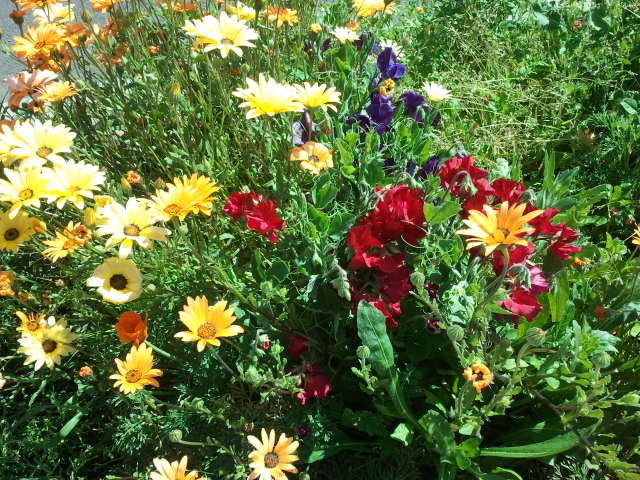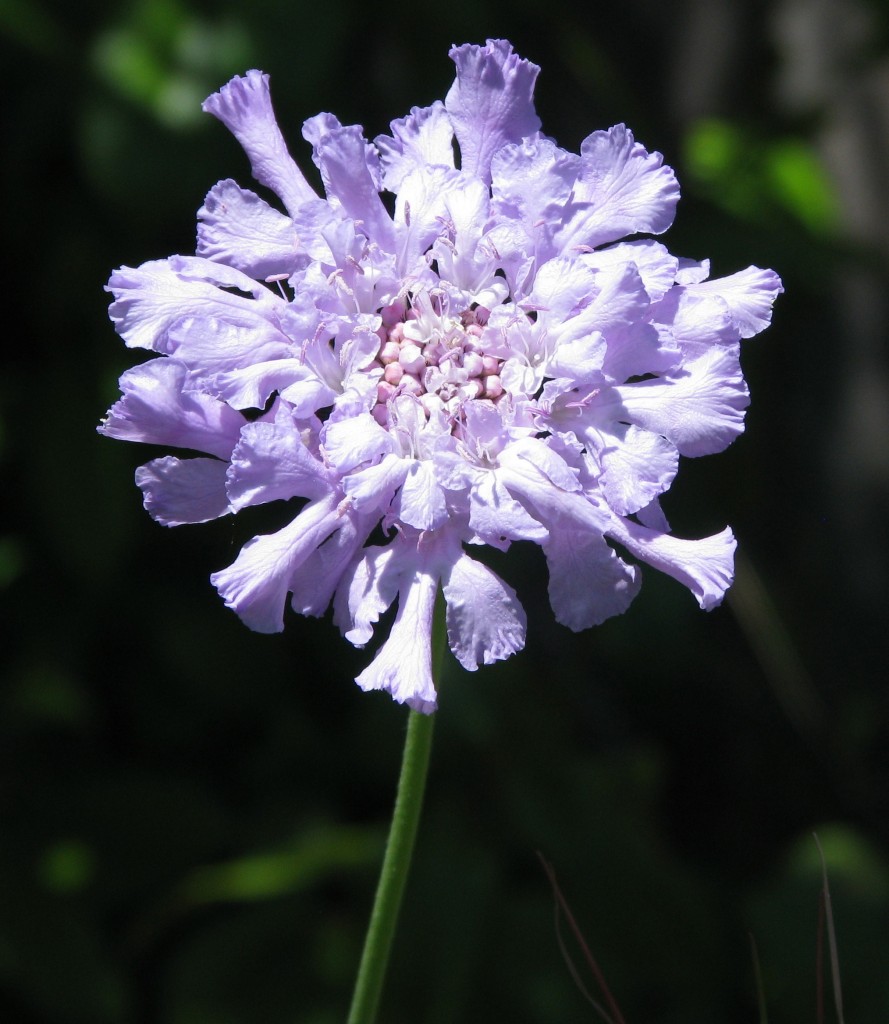
My Two Gardeners rabbit trail has taken a delicious turn down a literary lane…
Nov. 1960. Katharine White to Elizabeth Lawrence, regarding Katharine’s latest “Onward and Upward in the Garden Column” in the New Yorker:
Then another thing I did wrong, apparently, was to give the impression by my wording on Gertrude Jekyll that England had never had naturalized plantings until Robinson and Jekyll came along. Of course it had, and I knew it. I’m not learned enough to know where the craze for bedding out and for copying formal European gardens started but I remembered a passage in Mansfield Park where all the Bertrams and the Crawfords and poor Fanny Price went to spend the day at Mr. Rushworth’s estate to consider how to remake his landscaping and gardens, and Fanny mourned because Henry Crawford recommended cutting down an avenue of old trees. This made me wonder whether it was not between 1800 and 1820 that this all started. Jane Austen commenced this novel in 1811 and it was published in 1814. Do you, with your real learning, know about this? I would love to use the reference to Mansfield Park (and some others in the Austen novels) in a later piece if by any chance my hunch is right that Jane was satirizing a new fad in gardens…
Elizabeth replies:
I’ll lend you an article I have on Repton and Jane Austen, and I think it will answer all your questions….
The “naturalistic movement” came at the end of the the seventeenth century with the Earl of Shaftesbury, Addison and Pope. but it wasn’t very natural, I gather: ruins, romance and rustic seats.
[An aside. Later in the letter, Elizabeth adds a word of comfort for her meticulous friend’s consternation over slight inaccuracies in the New Yorker piece:
I gruel over things as you do, but I learn more by making mistakes than any other way. Even with the greatest care I find errors creep in, and when I learn better I write and correct what I’ve said before. But I try not to let it bother me. Everyone makes mistakes, but the really despicable people are those who protect themselves by never making a definite statement.
Emphasis mine. Oh how I love her!]
Two Gardeners editor Emily Herring Wilson helpfully includes a footnote to let us know that the article on Repton and Jane Austen was a piece by Elsa Rehmann called “Jane Austen and the English Landscape School,” published in Landscape Architecture in 1935. Katharine sends Elizabeth her thanks and expresses a hope to borrow the article until she has a chance to write her next column.
I admit I was crestfallen to find that Jane Austen had been so thoroughly explored, but I also think the author of that piece and even Jane’s famous editor, Chapman, didn’t quite see that the novelist was satirizing a current fad, in somewhat the same way, except more mildly, that she poked fun at the gothic novel. That least that is my theory, probably false…
This sent me looking for a passage I thought was in Sense and Sensibility, in which the odious Fanny Dashwood points out a grove of old trees and casually mentions her plans to have them pulled down and replaced with a Grecian temple. I couldn’t find it on a quick flip-through, though. Perhaps I am only remembering the film? Now that I think about it, I wonder if Emma Thompson borrowed that bit from the Mansfield Park scene Mrs. White describes above.
Well! Look what the Google turned up! I wanted to make sure I was remembering correctly that Emma Thompson wrote the screenplay for S&S. Turns out the entire screenplay is online as a pdf. But with permission? I can’t tell. (A search for “temple” turned up the scene I was remembering—almost word for word!)
Oh, these crazy interwebs.
(Quotes from: Two Gardeners: A Friendship in Letters, edited by Emily Herring Wilson, Beacon Press, 2002.)
Related:
Two Gardeners: A Rabbit Trail
“I have had to give up writing to my close friends”
“In the last decade our fiction writers use only ‘I’…”
Before the Internet
April 1, 2012 @ 7:06 pm | Filed under:
Gardening 
We harvested most of the radishes. There is nothing, but nothing, like the sight of a three-year-old’s face alight in wonder at his first glimpse of those bright red globes. (But then the long taproots alarmed him and he flung his harvest into the dirt.)
Something is eating my baby lettuces. Peter Rabbit, probably, thinks Rilla, who has been enjoying the Potter stories with me. I always seem to pull them out this time of year.
We have exactly one lime on the little tree that has never produced in the five years we’ve had it. Much hope hangs upon this rather unimpressive specimen…
The heavy rains two weeks ago washed out most of our carrot seedlings. I need to replant and keep forgetting.
Bees are ecstatic in the salvia, tree mallow, and nasturtiums. There’s a single blossom on Rose’s yellow rosebush. It’s quite a stunner, as if the bush put everything it had into this one glorious flower. This is the bud that was crawling with aphids the other day. Rilla enlisted the aid of a ladybug and it must have lunched itself to the bursting point, because the blossom is unblemished.
I’m still waiting for the bees to find the borage we planted last week. I have my doubts about it; it’s an unusual white variety, and I wasn’t sure it would attract bees at all. White flowers are night flowers, the delight of moths. But Farmer Bill assured me it’s a bee charmer, and Farmer Bill knows his stuff. We’ll be patient.
Only one of my sunflowers came up! It’s taller than Huck now and working on a bud. I wonder what critters got the rest of the seeds?
 I have to clarify something. In the Two Gardeners ramble I said Katharine White’s Onward and Upward in the Garden was the first horticultural tome I ever fell in love with, but that isn’t exactly true. At first I wrote “the first gardening book I ever fell in love with,” and immediately I knew that wasn’t right: that honor goes to (for me, as for so many others) The Secret Garden—a book I have read at least twenty times in my life, and I think that is a conservative estimate. It might be nearer thirty.
I have to clarify something. In the Two Gardeners ramble I said Katharine White’s Onward and Upward in the Garden was the first horticultural tome I ever fell in love with, but that isn’t exactly true. At first I wrote “the first gardening book I ever fell in love with,” and immediately I knew that wasn’t right: that honor goes to (for me, as for so many others) The Secret Garden—a book I have read at least twenty times in my life, and I think that is a conservative estimate. It might be nearer thirty.
So I changed “gardening book” to “horticultural tome,” not wanting, that day, to digress into the many pages of reasons why The Secret Garden is a book that shaped me, and either it was what taught me to thrill at the first sign of a green shoot poking out of cool spring soil, or else it gave me words to articulate that thrill I always felt. Either way, it was a book that explained me to me, and I would not be me without it. I was not temperamentally sour like Mary, nor sickly like Colin, nor wise like Dickon. I was probably more like Martha, the maid, than anyone else in that book, though I longed to comprehend the languages of foxes and larks, like Dickon, and to be daring and stubborn like Mary, and I admired the way Colin’s mind would fix on something and turn it over and over until he made sense of it. I understood Mary’s rush of emotion and thumping heart at the signs of spring creeping like a green mist over the dead, gray garden. I too yearned for my own bit of earth. (And got it: my mother gave us each a section of her flower bed to be our own. I grew snapdragons and moss roses, and they are still among my favorites and I cannot be without them.) Like Mary, I wanted to know the names of things and how to keep them “quite alive—quite,” and to converse with saucy robins and to smell the wind over the heather.
Sometimes I think there is no finer sentence in all of literature than: “She was standing inside the secret garden.”
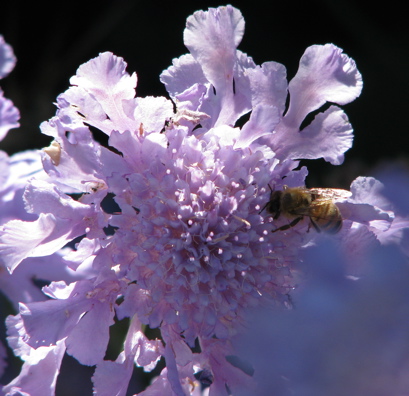
A book arrived yesterday that made me giddy. Scott saw me squealing over it and wanted to know what all the excitement was about. I tried to think how best to explain it to him.
“Okay, imagine that John Lennon and Elvis Presley were pen-pals. Say they had a lively correspondence, letters flying back and forth for years and years. Now imagine that this book is a collection of those letters.”
He raised his eyebrows. “Who are they really?”
I sighed happily. “Katharine White and Elizabeth Lawrence.”
Scott: “Um…?” But he knows me well. “Gardening?”
“Yes. Only my two favorite gardening writers EVER.”
“Like you had to tell me that.”
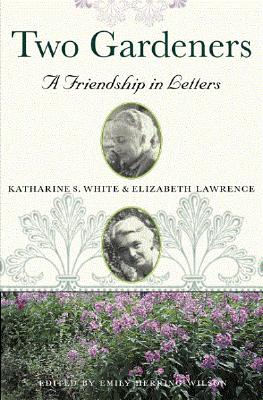 Everything about this book makes me smile. Editor Emily Herring Wilson’s introduction begins,
Everything about this book makes me smile. Editor Emily Herring Wilson’s introduction begins,
Gardeners are often good letter writers, and whether they write to describe what’s blooming today or to remember a flower from childhood, their letters are efforts to preserve memory. After they have put away tools in the shed, they write letters as a way to go on working in the garden. Because it is impossible to achieve the kind of perfection they dream of, they try to come to terms with their dreams by talking back and forth about their successes and failures….
Katharine S. White was, of course, the esteemed New Yorker editor whose occasional gardening columns are collected in the first horticultural tome ever to win my heart: Onward and Upward in the Garden. I had only to read her opening essay, the famous 1958 column that both celebrates and gently mocks gardening catalogs, critiquing them like works of literature, to know that here was a kindred spirit. Evidently Miss Elizabeth Lawrence, a knowledgeable and enthusiastic Southern garden writer (whose Gardening for Love I quoted the other day), felt the same spark of recognition. In May of 1958, Elizabeth wrote Katharine White a letter to say how much she’d enjoyed the New Yorker column, adding,
I asked [my friend] Mrs. Lamm if you were Mrs. E. B. White, and she said you were. So please tell Mr. E. B. that he has three generations of devoted readers in this family. My mother’s favorites were the one about leaving the mirror in the apartment vestibule, and the one about homemade bread. My niece adores Charlotte’s Web.
The mirror and bread essays (“Removal” and “Fro-Joy”) can be found in E. B. White’s One Man’s Meat, and if you know me at all, you know this sort of interwoven rabbit-trailing fills me with utter glee.
That first letter from Elizabeth to Katharine is fun, folksy, and smart, full of suggestions for other garden catalogs Mrs. White might enjoy. Several of her recommendations became fodder for subsequent ‘Onward and Upward’ columns. For nearly twenty years, until Katharine’s death in 1977, the two women wrote back and forth. So far, I have only read the first two of these letters. There must be hundreds of them in this book. I’m positively aflutter over the idea of such riches.
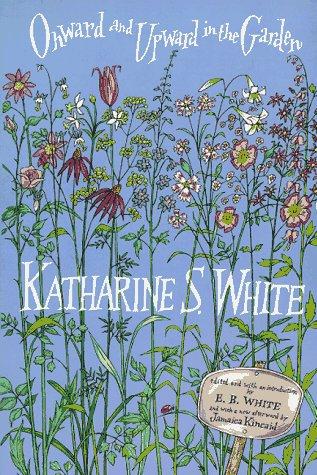 I didn’t get farther than the first letter last night because I found I had to interrupt it in the middle and go reread the Katharine White essay. Which led to another googlesome rabbit trail to see if any of the old catalogs she references can be read online. The Roses of Yesterday and Today catalog, whose author at the time, a Mr. Will Tillotson, had an “informative and occasionally rhapsodic” style that charmed Mrs. White no end, is still around—though Mr. Tillotson died in 1957, a fact Mrs. White adds in a sorrowful postscript at the end of her essay. The 1959 catalog seems to have been reprinted some years back. In her essay, Katharine quotes extensively from the 1955 and 1956 catalogs, which she says she borrowed from a friend, adding, “I must not keep them long, because though she has never bought a Tillotson rose, she reads Tillotson every night before she goes to sleep.”
I didn’t get farther than the first letter last night because I found I had to interrupt it in the middle and go reread the Katharine White essay. Which led to another googlesome rabbit trail to see if any of the old catalogs she references can be read online. The Roses of Yesterday and Today catalog, whose author at the time, a Mr. Will Tillotson, had an “informative and occasionally rhapsodic” style that charmed Mrs. White no end, is still around—though Mr. Tillotson died in 1957, a fact Mrs. White adds in a sorrowful postscript at the end of her essay. The 1959 catalog seems to have been reprinted some years back. In her essay, Katharine quotes extensively from the 1955 and 1956 catalogs, which she says she borrowed from a friend, adding, “I must not keep them long, because though she has never bought a Tillotson rose, she reads Tillotson every night before she goes to sleep.”
Mrs. White is similarly fond of Amos Pettingill, the “peppery” and “highly distinctive” persona holding forth in the pages of the old White Flower Farm catalogs. When I first read Onward and Upward as a college student (avoiding my English lit assignments, no doubt), I immediately sent away for a copy of the current White Flower catalog, even though I had 1) no garden; 2) no money; 3) no business poring over garden catalogs when I ought to have been plowing through my coursework. I can’t remember now whether Amos Pettingill was still dispensing wisdom in its pages. If he was, he had a new ghostwriter by then, since the original Amos, Mr. William Harris—a writer for Fortune magazine (and, with his wife, founder of White Flower Farm)—died while I was still in middle school. The welcome letter at the current White Flower website is signed “Amos Pettingill,” so someone is keeping up the tradition, I see.
Here’s an interesting bit of trivia I learned from the footnotes of Onward and Upward: William Harris’s wife was Jane Grant, a New York Times writer whose first husband was Harold Ross—Katharine White’s boss at The New Yorker. When Katharine wrote that essay, she had no idea she was singing the praises of her boss’s ex-wife’s new husband. Having just learned that Harold Ross was “one of the original members of the Algonquin Round Table,” I can’t help but imagine how Dorothy Parker must have chuckled wickedly when she heard. Because of course Dorothy Parker would have heard.
Elizabeth Lawrence’s taste in garden literature ran in a more down-home direction. Her Gardening for Love (polished and published after her death by Allen Lacy—the third name on my Top Three Garden Writers list) focuses on the advertisements of country farmers and farm wives in agricultural market bulletins. I tried very hard, one summer during graduate school, to track down some of these old bulletins, but that was before the Google and my search was unsatifactory. You can probably get them on eBay now, but I haven’t looked.
Ha, I couldn’t resist, I’ve just gone and looked. Not at eBay: a Google search for “market bulletins” turned up a link to the Louisiana Dept. of Agriculture’s current market bulletin, which you can download just like that. The ads—to which I turned immediately, since those were Miss Lawrence’s special fascination—read exactly like the ones she quotes from the ’50s and ’60s.
“Belinda’s dream rose, knock roses, 6 colors, drift ground cover roses, Little John bottle brush kaleidoscope abelia, Lady Banks roses, Shishi camellia, in 3-gal. containers, $10-$18/1; 30 varieties azaleas-camellias, $4-$25/1. L— C—, Husser, Tangipahoa Parish.”
This very same Louisiana Market Bulletin makes numerous appearances in Gardening for Love. And I know this post is already a giant game of Six Degrees of Separation (where perhaps E. B. White stands in for Kevin Bacon?), but there’s another literary connection worth mentioning: it was Elizabeth Lawrence’s friend Eudora Welty who first introduced her to the market bulletins.
“Years ago Eudora Welty told me about the old ladies who sell flowers through the mail,” writes Miss Lawrence in the opening chapter of Gardening for Love. “She put my name on the mailing list.”
She continues:
Like Eudora’s novels, the market bulletins are a social history of the Deep South. Through them I know the farmers and their dogs, their horses and mules, and the pedigrees of their cattle. I wonder whether the widow with no family ties found a home with an elderly couple needing someone to take care of them; whether the bachelor with no bad habits found a congenial job where the hunting and fishing were good; whether puppies got homes and lost dogs were found. And I wonder who bought the little farm with the pecan trees and good clear well water.
Most of all I like to think about the hard-working farm women who are never too tired, when their farm work is done, to cultivate their flowers gardens. They always find time to gather seeds, to dig and pack plants, and to send them off with friendly letters. To all parts of the country they send them off—yard plants, houseplants, and window plants. Reading the flower lists is like reading poetry, for the flowers are called by their sweet country names, many of them belonging to Shakespeare and the Bible.
Elizabeth Lawrence seems to have enjoyed the correspondence with her “hard-working farm women” as much as she loved their flowers, for the letters she received from them play a huge part in Gardening for Love. “The farm women are great letter writers,” she says, “and usually answer (delightfully and often at length) if a stamped and addressed envelope is enclosed.”
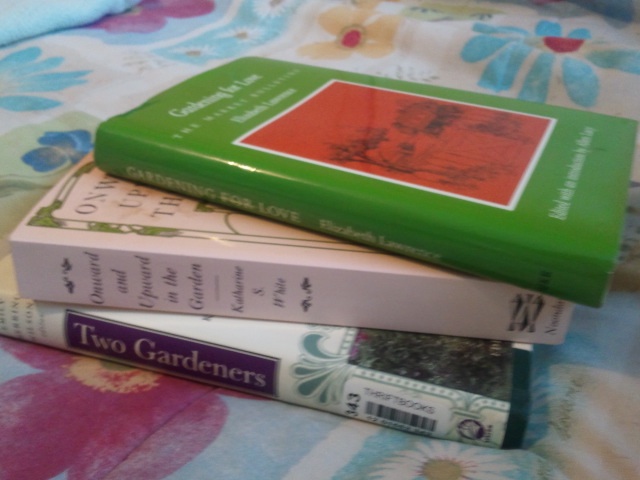
Of course, reading about these correspondences now, in 2012, I can’t help but think about the changed landscape of letters. I’ve never been very good, myself, at putting literal pen to actual paper, let alone following through with a stamp. Take away my keyboard and I go mute. We talk to each other now in blog posts and comment boxes, and in emails, IMs, texts, tweets, status updates—and this thrills me. I’m not a communications neo-Luddite. I love that we have so many ways to connect, nowadays. Still, it’s hard to imagine a collection of emails filling me with the same kind of soaring joy I feel at holding the White-Lawrence correspondence in my hands. “Dear Miss Lawrence,” writes Katharine in reply to Elizabeth’s first missive, “it was delightful to get your your letter…”
Yes, it really was. Now if you’ll excuse me, I think I’ll go read letter number three.
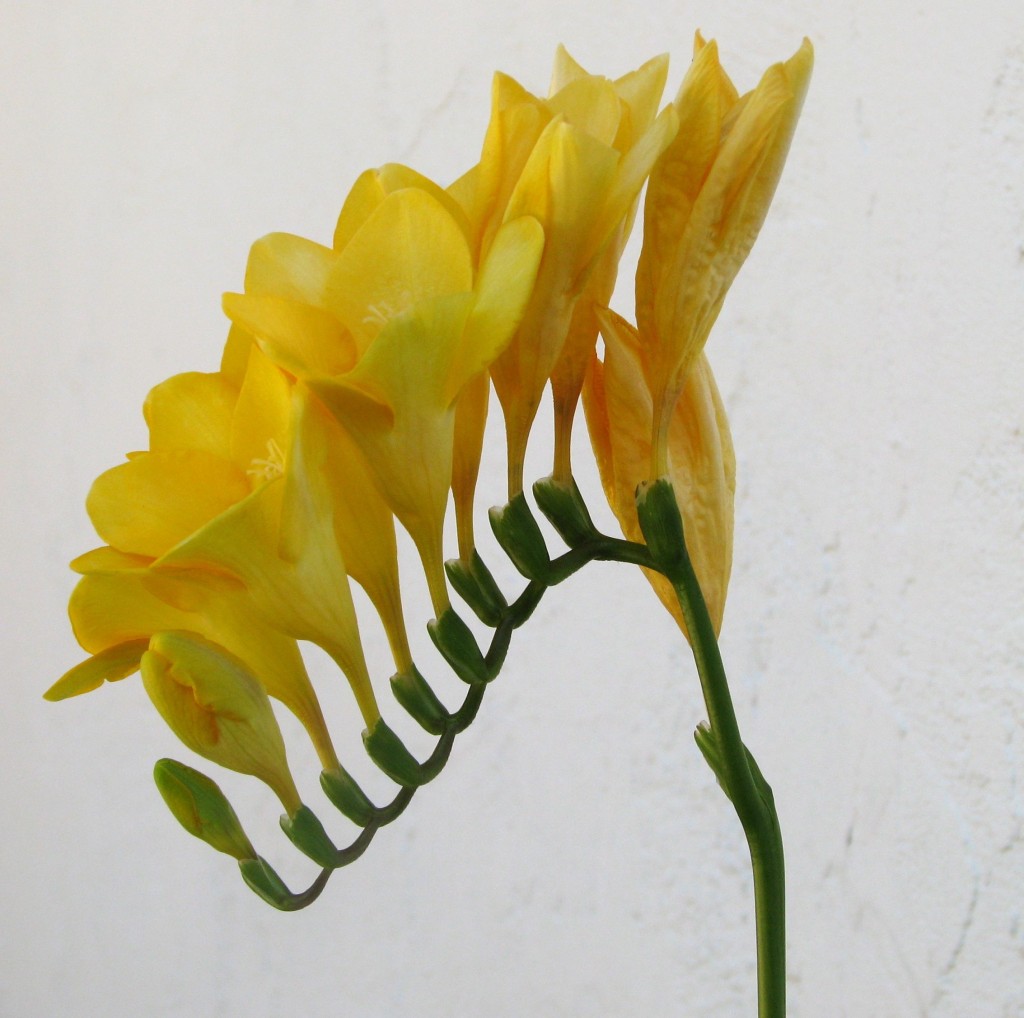
While we were away, cold rains pounded San Diego, stranding my parents inside with the kids and washing away most of our carrot seedlings. The radishes and lettuces survived the floods and are looking sprightlier than ever. The blueberries dropped a lot of blossoms but I think we’ll get a few berries, at least. The flowers are lusher than ever, fresh-faced now that I’ve picked off the spent, rain-battered blossoms.
We miss our bird feeder. Last summer, it attracted rats, so we emptied it. I’m aching to try again. When we moved from New York to Virginia in the winter of 2002, the very first box I unpacked was the one marked BIRD FEEDERS. True story. In our Long Island backyard, we had downy woodpeckers, nuthatches, and titmice at the feeders every day. I can still feel the cold glass of the sliding door that tiny Jane and I use to lean against as we watched our birds. In Virginia, we had cardinals, juncoes, and my favorite, the wee chickadees. A pair of bluebirds nested in a box under our deck, right outside my office window. I wrote Across the Puddingstone Dam between bouts of peeking at those bluebirds from between the blinds.
In this yard, we mostly only see sparrows and finches, and the imperious crows. There’s a lone phoebe, junco-gray and tufted like a cardinal, who perches on the fence, watching warily as I putter in the garden. There are the hummingbirds, of course, flashing low overhead like little green comets, perching on the slender branches of the cape honeysuckle. They adore those trumpety orange flowers, as do the bees. I haven’t seen the scrub jay in a while. All last summer he called outside our bedroom window at a minute past sunrise every morning. The kids named him Peanut, after his favorite food.
I just googled my own blog to see when I’ve posted about the flock of parrots in years past. January and February is when they swirl through our neighborhood, it seems. But I don’t think I’ve heard them this year! Any other San Diegans know the whereabouts of those rowdy green squawkers right now?
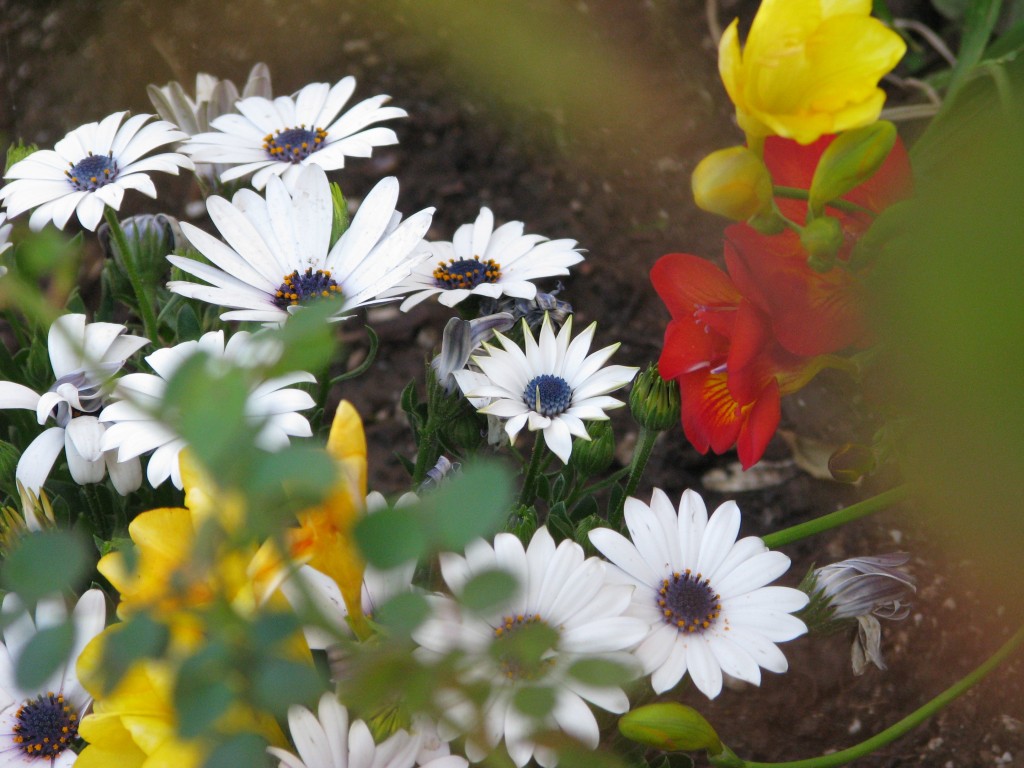
Beauty, tangled and blurred: this is pretty much my life these days. Feverishly working, then wandering out to the garden where I’ll find myself kneeling, gazing, actually watching seeds grow. The radishes, especially. We’ll mark their height and one hour later, they’re taller.
But this morning something had eaten three of them to nubby stems. So. Well. I’m in suspense about tomorrow. Will there be anything left?
“Mommy,” Rilla said earlier this week, “what’s that word for what we do in the garden? I think it starts with a P.”
“Um…putter?” I guess.
“Yes! Putter. Can we go out and putter together? In the garden?”
Can we ever! Music to my ears, little girl. We slip outside together almost every morning and crouch and study. Carrots, sprouted. Lettuces, thriving. Blueberry bushes, loaded with white bells. They were my Mother’s Day present from Scott last year—the year before that, it was my milkweed; he takes hints very well—and when we bought the two small bushes they were covered with blossoms, but almost every last one fell off from transplant shock. Or something. We got exactly three blueberries last year. This year, the plants have acclimated nicely and we have high hopes: perhaps we’ll get a bowlful. They’re little fairy bushes, after all, still tiny.
Rose talks to the mourning doves and they talk back. Me, I’ve got a relationship with a couple of wary crows. I toss bread crusts onto the patio roof and they eye me, heads cocked, from the telephone wire or the enormous Moreton Bay fig on the other side of the schoolyard fence. They wait until I walk away and busy myself in the opposite corner of the yard, and then they swoop. Mornings I neglect my part, they clack at me from the neighbor’s wall.
I’m teaching Wonderboy to fingerknit. It’s slow going; this fine motor work is difficult for him. That’s part of why we’re doing it, to help his fingers become more nimble. But also for the cuddle-up-close time, and the chatter. I’m greedy as a crow about moments like that.












